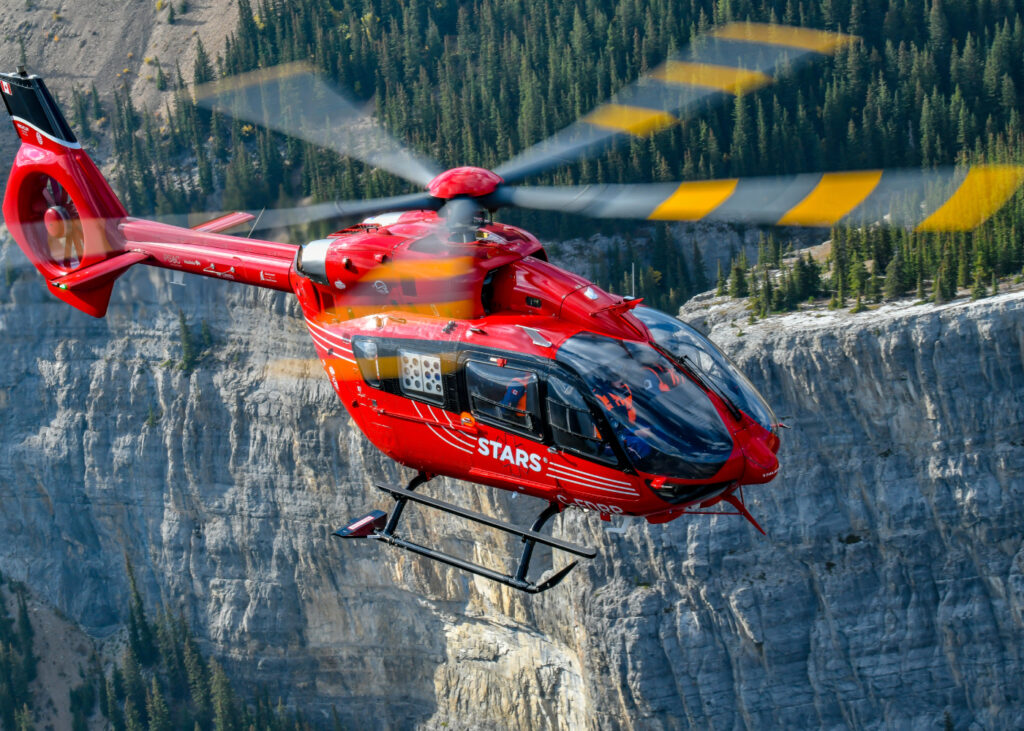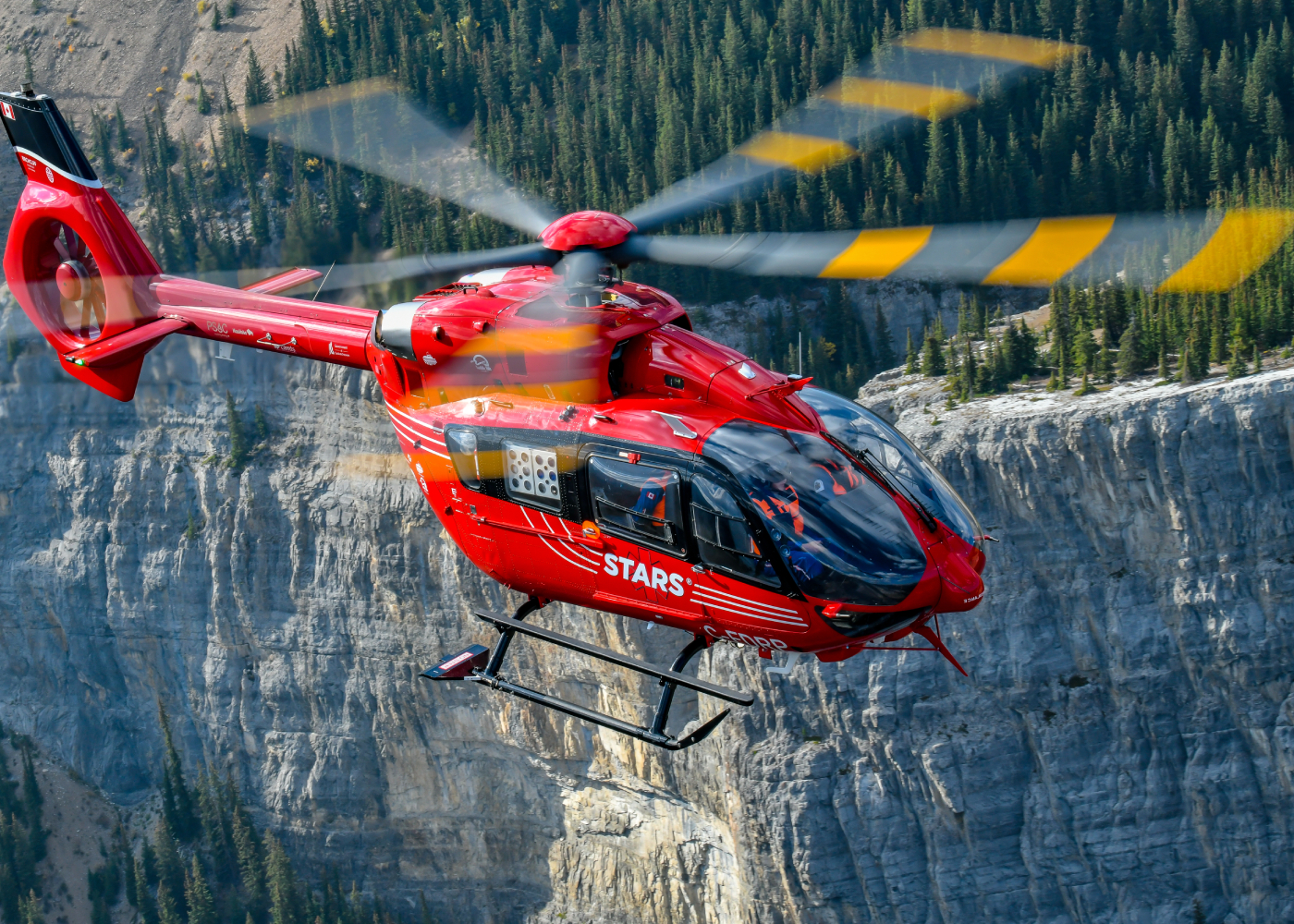Airbus Helicopters said it expects it will take “two to three” years for the industry to return its pre-Covid state, with geopolitical and economic uncertainty causing operators to delay purchase decisions towards the end of 2022.

“We’re on the way to a recovery,” David Prevor, head of marketing analysis and forecasting at Airbus Helicopters, told media while unveiling the manufacturer’s 2022 Market Status and Outlook report. “It’s not a one-shot recovery in one year and we’re back on track, it’s actually taking several years. And what we anticipate . . . is it will happen over the next two to three years to go back to the ‘normal’ level of the industry.”
According to Airbus, there were 1,082 turbine helicopter bookings around the globe in 2022, with 584 of those being for the civil and parapublic market, and 498 for the military sector. While this was a significant increase from the nadir of 751 global turbine booking in 2020, it was still some way below 2019’s figure, and represented just a two-percent uptick from the number of aircraft ordered in 2021.
Airbus itself recorded 374 civil orders in 2022, down from 2021’s 419.
Prevor said “the world economy has never faced such a high level of risk” as it did in the third quarter of 2022, and although prospects have now improved, this uncertainty led to the postponement of purchases.
That there was any growth in turbine sales was thanks to the military market, he said. Driven by orders for training and tactical transport aircraft, there were over 110 more military aircraft ordered in 2022 than in the previous year, while the civil and parapublic market orders actually reduced by 86.
However, there was the first sign of a rebound in the energy segment (in which Airbus includes wind power, along with oil-and-gas), with 16 aircraft ordered for work in the sector — a mix of Airbus H175s and H145s, and Leonardo AW169s and AW189s. Super mediums were the only helicopter class that sold more last year than in 2019, and this has been driven by growth in the energy segment, Prevor said.
Another positive sign is the continued strength of the private/business aviation sector, which was the only civil sector exceeding 2019 bookings in 2022.
Geographically, only the traditionally strong markets of Western Europe and North America exceeded 2019 orders last year.
In terms of productivity, the global average of flight hours per turbine helicopter was up seven percent from 2021. This increase was most pronounced in commercial operations (+18 percent) and oil-and-gas (+12 percent), with air medical, private/business aviation and public services remaining relatively static. Airbus said this was more a reflection that aircraft in these sectors were kept busy throughout the pandemic rather than any negative factor last year.
All told, this reflects “a balanced situation between supply and demand” in a global sense, said Prevor. “There was clear oversupply of helicopters in [civil] operations in 2021,” he said. “This oversupply has been absorbed and this is what we see here.”

Looking ahead, Airbus predicts more than 16,200 civil and parapublic helicopters will be delivered over the next 20 years, worth an estimated €120 billion. Of those, almost 12,000 will simply replace retiring airframes — meaning Airbus expects the global helicopter fleet to grow by just over 4,200 aircraft (16 percent) over the next two decades.
According to the manufacturer, the current global in-service fleet of civil and parapublic helicopters is just over 26,000. Over the last 10 years, 60 percent of the aircraft entering the market have been for market growth rather than replacement, but Airbus clearly expects that growth to drastically slow over the coming years.
Prevor said this is largely due to the maturation of the North American and Western European markets, while Airbus also expects a sizeable portion of the existing fleet (55 percent) to still be in operation in 2042.
Future global growth will be driven by Asia/Pacific (+ 33 percent), Africa/Middle East (+31 percent), and Latin America (+18 percent), the company believes.
Of those 16,200 aircraft entering operation over the next 20 years, Airbus said half will be light singles — but they will represent just 18 percent of the value. At the other end of the scale, it expects a demand for over 2,000 super medium/heavy helicopters, representing 32 percent of the overall value.
Focusing on the energy sector, Regis Magnac, the company’s head of energy, leasing, and global accounts, said the future looks positive, with overcapacity now absorbed and flight hours increasing.
“Clearly what we see is signs of a rebound in the energy sector,” he said. “We see clearly the 175 particularly, [and other] super mediums replacing the heavies — or at least taking a role that used to be taken by the heavies.”
He said the energy industry had been “underinvesting in the last few years,” with Airbus expecting a new cycle of replacement to begin as older Sikorsky S-92s begin to retire from the offshore fleet.
“if you look at the public data on registration numbers, we’re in the range of 12 aircraft [likely to exit service] a year in the next 10 years,” he said. In the short term — the next five years or so — super mediums would replace these larger aircraft, he added.
“It’s hard to imagine where the energy sector will be in 10 years,” said Magnac, “but for the first five years it’s obvious. And when is it starting? I sense it’s starting now.”









